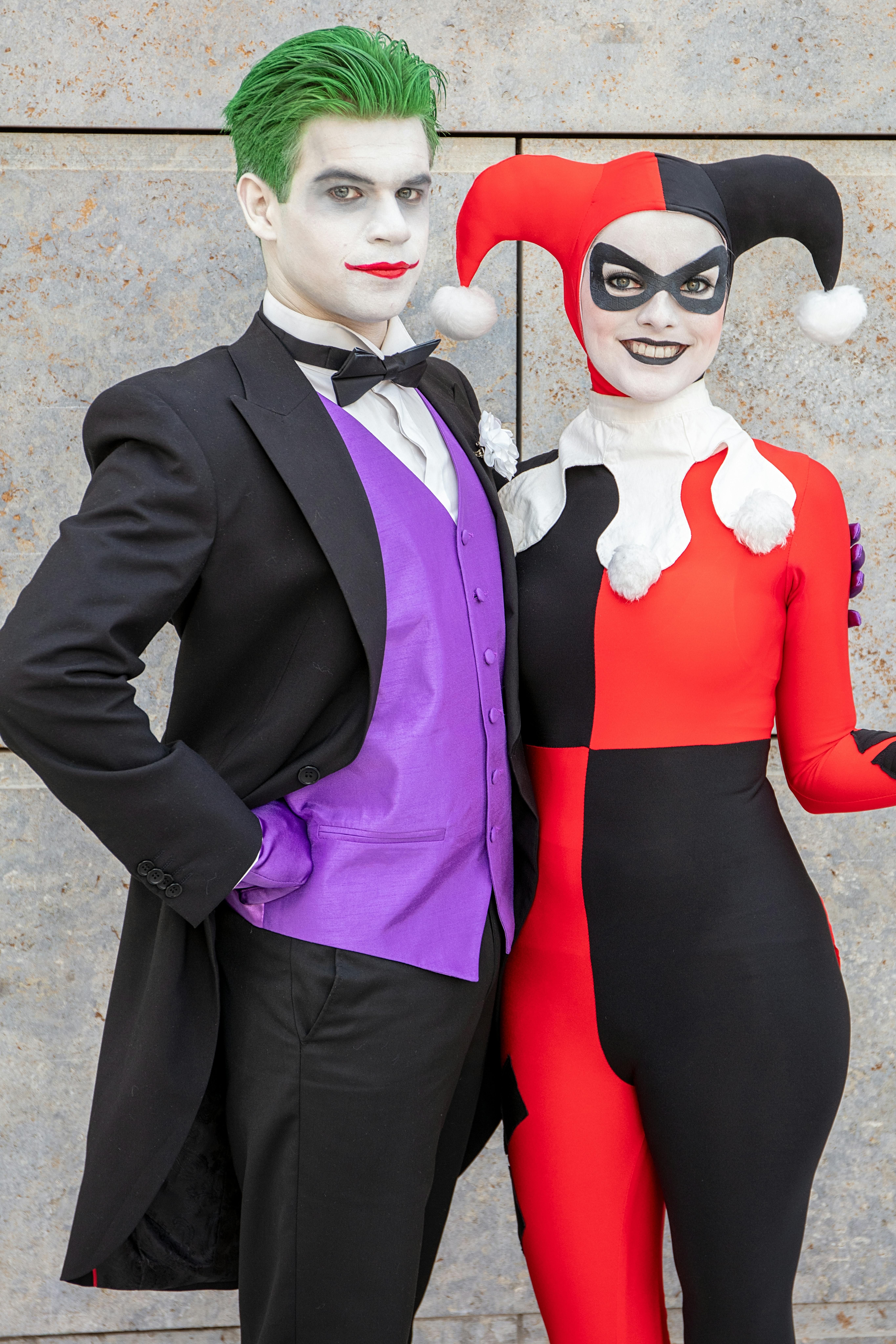
Apply Now


Effective Ways to Explore Image Comics Characters in 2025
Exploring image comic characters involves diving deep into the vibrant worlds created by comic book artists and writers. In 2025, the landscape of superheroes, comic book characters, and graphic novels continues to evolve, revealing unique character designs and storylines that captivate audiences. With the rise of superhero films and adaptations, understanding the lore of comic book characters becomes essential for fans and newcomers alike. This article will guide you through various effective explorations of iconic superheroes, vintage comic heroes, and the intricate details surrounding popular comic book series. We will delve into important aspects such as character origins, the evolution of comic book universes, and the diverse backgrounds of comic book fandom. Readers can expect to uncover methods for analyzing comic character arcs, trends in superheroine representation, and how the world of graphic storytelling has shaped contemporary comic book mediums. By the end of this article, you'll have discovered various avenues for understanding the multi-layered world of comic characters—from the comic book retail landscape to indie comic characters and beyond.Understanding the Evolution of Comic Book Characters
Building on the fundamentals of comic book storytelling, let's examine how comic characters have evolved over time. Character development is a crucial aspect of any comic's success, and analyzing the progression of superheroes and villains helps us appreciate their journeys. Comic book characters often begin with basic archetypes, which evolve into complex personalities with unique motives and intricate backstories.Tracing the Origins of Classic Comic Characters
Classic comic characters, whether from Marvel or DC, provide a valuable insight into their respective lore. The origins of these legendary figures often reflect societal values, myths, and the artistic styles of their time. For example, Superman's introduction in the 1930s not only represented hope but also the American spirit during challenging times. Today, various comic book adaptations help reintroduce these characters to new audiences, shedding light on their historical significance and cultural impact.Modern Trends in Character Design
Today, comic character designs have also seen significant evolution. Artists are now blending various styles—traditional, digital, and mixed media—to bring characters to life in unique ways. This evolution reflects broader trends in graphic storytelling and the desire for more diversity within comic book universes. By analyzing modern graphic novels and webcomics, readers can gain insights into how new techniques and perspectives are enriching the character landscape.Diverse Comic Characters and Cultural Representation
The importance of diverse comic characters cannot be overstated. In 2025, readers expect to see more inclusive representation across comic book genres. Comics that focus on underrepresented voices challenge traditional narratives and create new spaces for dialogue. By appreciating how these diverse characters emerge from their own cultures, readers can connect on a deeper level, exploring themes of identity, social issues, and empathy.Crossover Events and Their Impact on Character Evolution
Crossover events, where different comic book series interconnect, have become a staple in the comic book industry. These significant events often bring together a myriad of heroes and villains, allowing readers to witness character interactions and growth in unique contexts. Understanding the mechanics of these events enhances the reader's experience, revealing how multiple narratives can intertwine to create rich storytelling opportunities.Engaging with Comic Book Fandom
With these basics established, let's explore the vibrant world of comic book fandom. Comic book conventions, online communities, and social media platforms are essential in connecting fans around shared interests. Fans not only share artwork and cosplays but also dive deep into character analyses, offering different perspectives on the comic book mythos.The Role of Comic Book Collectors
Comic book collectors play a crucial role in preserving the history of comic book characters. Through collecting issues, both vintage and modern, enthusiasts contribute to the ongoing narrative of superheroes and their stories. Many collectors become experts in various comic book franchises, holding invaluable knowledge regarding the significance of different story arcs and graphic novel adaptations.Participating in Comic Conventions
Comic conventions are prime opportunities for fans to immerse themselves in the comic book world. These events celebrate creativity, linking readers with comic book artists, writers, and other fans. Engaging in panels that discuss character evolution, storytelling techniques, or even superhero crossovers allows fans to gain insights directly from creators.Exploring Online Comic Communities
Online communities are a vibrant extension of comic book fandom. Websites, forums, and social media groups provide platforms for discussions about comic character lore, trends, and impactful storylines. These communities can enhance one’s understanding of comic book culture and its intersection with broader societal issues. Fans often share recommendations, opinions, and analyses, raising awareness of diverse comic book characters and reminding us of the power of storytelling.Analyzing Character Arcs in Popular Series
Character arcs in popular comic book series also provide a wealth of material for analysis. Exploring the motivations throughout various issues sheds light on the evolution of character traits and relationships. Observing significant changes allows fans to understand better what drives comic book heroes and villains, ultimately deepening the appreciation for graphic novels and comic book storytelling.Deep Dive into Comic Book Storytelling Techniques
Evolving storytelling approaches are vital to the success of any comic. Analyzing different graphic storytelling methods can open one's eyes to the intricate details that make comic books unique. By studying the narrative devices employed, fans can appreciate how visuals and text combine to create captivating tales.Visual Rhetoric in Comics
Visual storytelling techniques are essential in capturing emotions and conveying themes. Comic artists employ various methods, such as panel arrangement and color choices, to evoke specific feelings and responses. These techniques significantly contribute to the overall message of the comic, showcasing the power of images alongside written dialogue. Analyzing these components reveals how comics provide profound emotional resonance, impacting readers more profoundly than text alone.Dialogue and Character Voice in Graphic Novels
The scripting of dialogue plays a crucial role in establishing character voice and personality. Analyzing the nuances within character speech reveals their backgrounds, motivations, and relationships with others. Comic writers often use specific phrases, humor, or tone variations to develop a voice unique to each character.Narrative Structures in Comics
Understanding narrative structures in comics is essential for appreciating their storytelling depth. Comics may employ various structures—linear, fragmented, or multi-perspective—to present their tales. Critics and readers can analyze how these structural choices influence the delivery of the story, the pacing, and the subsequent character development.Character Motivation Analysis
Delving into character motivations can unlock mountains of insight regarding their actions throughout the comic series. By examining key moments where characters evolve or pivot, readers gain clarity about their choices and the context surrounding them. This exploration delves into what truly drives heroes and villains, allowing for a richer reader experience.Understanding Comic Book Marketing and Merchandise
After exploring storytelling and character development, let’s take a closer look at comic book marketing and the merchandise that thrives within this vibrant industry. Understanding these aspects helps fans appreciate the business side of comics, as well as the impact it has on enjoyment and engagement.The Global Comic Book Market Landscape
The global comic book market has exploded in recent years, with online stores and independent publishers making comics more accessible than ever. Awareness of market trends informs fans about which characters and storylines are gaining traction, enabling them to discover new favorites within the comic book universe.Comic Character Merchandise Trends
Merchandise related to comic characters continues to thrive, offering fans various products—from figurines to clothing. By exploring trends in character-inspired merchandise, enthusiasts can analyze the reach of their favorite heroes beyond the pages of comic books, bridging the gap between fandom and lifestyle.Impact of Animations on Comic Characters
Animated adaptations of comic book characters have significantly influenced their popularity and perception. Understanding how animations breathe new life into iconic superheroes may alter the way fans connect with them. Additionally, these adaptations contribute to the ongoing evolution of their respective comic book lore.Adaptations of Comics in Film
Film adaptations bring comic book narratives to a broader audience, creating new fans and potentially transforming characters' arcs. By critically observing adaptations of popular superhero stories, readers can examine how film interpretations align with or diverge from their comic book counterparts. This exploration invites discussion about fidelity in adaptations and the impact on overall character reception.
